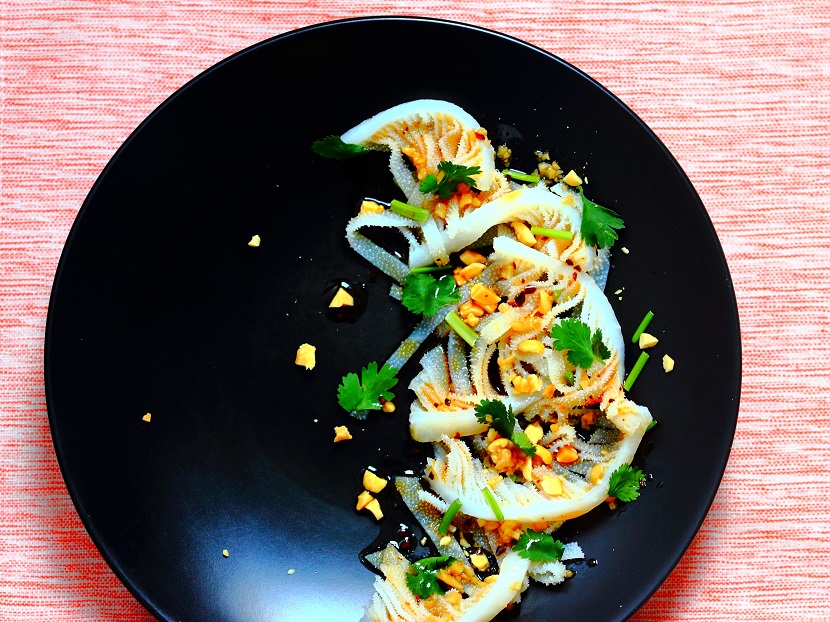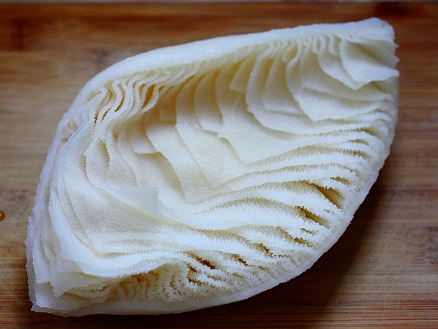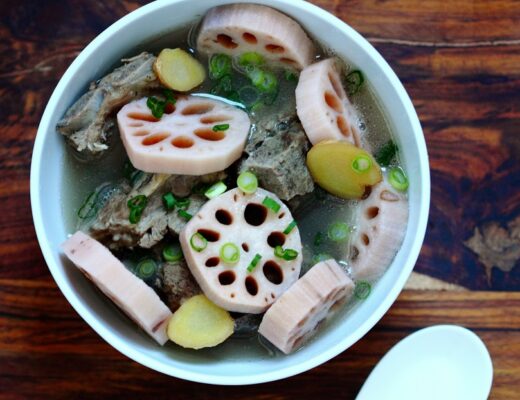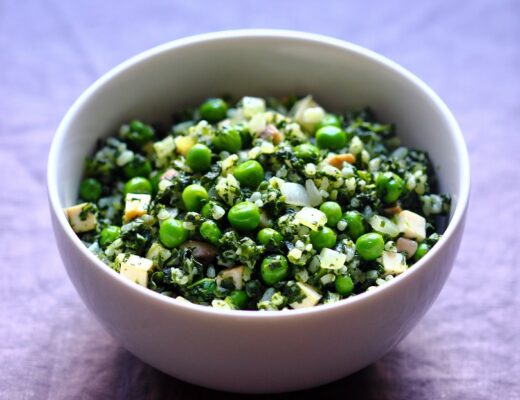Last Updated on July 28, 2021 by Simon Fan
Tripe may not be for everyone, but it’s adored by those of us who value texture as an important part of eating.
While tripe from any hoofed animal is consumed somewhere in the world, beef tripe is arguably the most popular, revered in many cuisines around the world including French, Italian, Mexican, and Chinese, to name a few. Honeycomb tripe, the second compartment of a cow’s stomach, appears most often in recipes, and slow cooking is a great way to turn it soft-chewy, gelatinous, and succulent.
Other parts of a cow’s stomach can offer very different but equally exciting textures. My recipe here features omasum, the third compartment of a cow’s stomach. As you can see from the picture, it consists of thin sheets of tissue attached to a denser outer ring, which is why it’s often called book tripe. In Mandarin, it’s called niu bai ye (牛百叶), in which niu means cow and bai ye can be translated as “a hundred leaves.” Because of its unique and delicate structure, omasum tripe should be cooked very briefly. A quick stir-frying, steaming, or blanching in boiling water is all you need to retain its beautiful shape and achieve a lovely crunchy texture.
The recipe below is my rendition of the famous Sichuanese dish Omasum beef tripe in chili oil (红油百叶). The assertive flavors of chili oil, garlic, and cilantro contrast nicely with the mild taste of tripe, and the crushed nuts further accentuate omasum’s crunchiness.
You can find omasum tripe at Asian grocery stores or other ethnic markets. It’s typically sold cleaned and ready to use.
Sichuan omasum beef tripe in chili oil (四川红油百叶)
Serves 2
Ingredients
1 bunch of cilantro
12 oz (340 g) omasum beef tripe, cleaned
2 garlic cloves, minced
1 tablespoon Shaoxing wine
1 tablespoon vegetable oil
1 tablespoon chili oil
1 tablespoon soy sauce
1 teaspoon Zhenjiang (aka Chinkiang) vinegar
½ teaspoon sugar
2 tablespoons peanuts, crushed coarsely (sesame seeds and pine nuts are good options as well)
Directions
- Separate the cilantro leaves from the stems. Cut the stems into ½-inch (1.3 cm) pieces.
- Rinse the tripe thoroughly under running water. Cut the tripe along the sheets into smaller sections, each about 2 to 3 inches (5 to 7.5 cm) wide. Cut each section against the sheets into ¼-inch-thick (6 mm) pieces, each resembling a little comb.
- Bring a pot of water to a boil, then add the wine. Working in batches, blanch the tripe in the boiling water for 20 seconds, then immediately transfer to a bowl of cold or ice water to cool (this helps to create a crunchy texture). Drain well and pat the tripe completely dry with paper towles.
- In a heatproof bowl large enough to hold the tripe, spread the minced garlic at the bottom. Heat the vegetable oil and chili oil in a small pan until shimmering, then pour the mixed oil over the garlic. Let cool a bit, then mix in the soy sauce, vinegar, and sugar. Add the tripe pieces and toss to coat with the sauce. Arrange them attractively on a plate, and top with the peanuts and cilantro leaves and stems.




